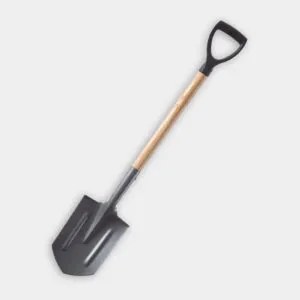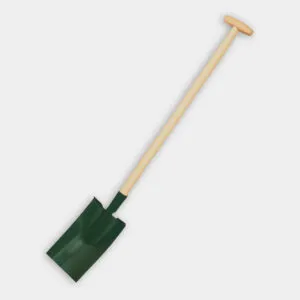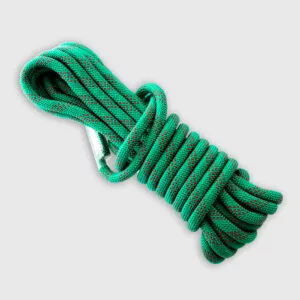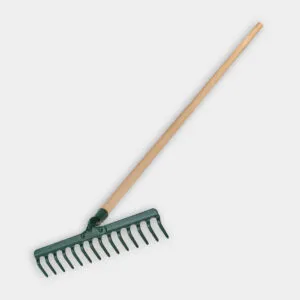Transplanting a rhododendron can breathe new life into your landscape, giving this beautiful shrub a fresh start in a more suitable location. Whether you’re redesigning your garden or rescuing a struggling plant, This Old House landscape contractor Roger Cook shows you the process of successfully relocating a large rhododendron to a new spot in the yard in the video above.
Understanding Rhododendrons
Rhododendrons are beloved for their vibrant blooms and attractive foliage. However, to thrive, they need a specific set of conditions.
Rhododendron Growth Requirements
Rhododendrons have particular growth requirements that contribute to their health and performance:
- Soil pH: Rhododendrons prefer acidic soil with a pH level between 4.5 and 6.0.
- Moisture: They require consistent moisture but well-draining soil to prevent waterlogged roots.
- Light: These plants thrive in partial shade, avoiding the harsh afternoon sun which can scorch their leaves.
Common Challenges
When transplanting rhododendrons, you may encounter several common challenges including;
- Root Binding: Older plants may have roots that are tightly bound, making it difficult to extract them from the soil.
- Sensitivity to Change: Rhododendrons can be sensitive to changes in their environment, requiring extra care during and after the transplant.
- Pest and Disease: They are susceptible to pests like spider mites and diseases such as root rot, which can be exacerbated by poor transplanting practices.
Preparing for a Rhododendron Transplantation
Before you begin the transplanting process, you’ll first need to prepare both the rhododendron and its new location to give it the best chance of survival.
Choosing the Right Time
Timing is essential when transplanting rhododendrons. The best times are early spring, just before new growth begins, or late fall, after the plant has gone dormant. Avoid transplanting during hot, dry summer months, as the stress from heat can harm the plant.
Selecting the New Location
Rhododendrons thrive in specific conditions. When choosing a new spot, consider:
- Partial Shade: Select an area that offers protection from harsh afternoon sun.
- Well-Draining Soil: The soil should be rich in organic matter and provide adequate drainage.
- Space: Ensure there is enough space for the plant to grow and spread.
- Wind Protection: Choose a location shielded from strong winds to prevent damage to the plant.
Preparing the New Planting Hole
A properly prepared planting hole helps ensure the rhododendron’s success in its new location. Here’s how to prepare the new site, as demonstrated by Cook in the above video:
- Dig a hole about 12 inches deep and twice as wide as the root ball.
- Mix compost into the existing soil to improve drainage and nutrient content.
- Create a slight mound in the center of the hole to prevent the plant from settling too deep.
Digging Up the Rhododendron
Carefully removing the rhododendron from its original location is an important step in the transplanting process that will need to be performed with care.
Root Ball Preparation
To ensure the rhododendron retains as much of its root system as possible:
- Water the plant thoroughly a day before digging.
- Mark a circle around the plant, about five feet in diameter.
- Use a sharp spade to cut through the roots along this circle.
- Dig down at least six to eight inches, or until you’ve reached below the main root mass.
Protecting the Plant During Removal
You’ll also need to be careful to protect the rhododendron’s branches during the move:
- Gently tie up the branches with soft rope to prevent breakage.
- Use a transplanting shovel to cut any remaining roots beneath the root ball.
- Carefully lift the plant from the ground, supporting the root ball.
Moving the Rhododendron
Transporting a large rhododendron requires careful planning and the right equipment For larger rhododendrons, specialized equipment may be necessary, such as a small excavator with forks, protective mats for your lawn and driveway, or strong ropes for securing branches.
Transportation Process
Cook demonstrates the following process of using a small excavator to move the rhododendron in the above video. Here are the steps to follow:
- Position the excavator’s forks under the root ball.
- Slowly lift the plant, keeping it level.
- Transport the rhododendron to its new location, moving slowly to minimize disturbance.
Planting the Rhododendron in the New Location
You’ll also need to ensure the rhododendron is planted correctly to ensure it thrives in its ne home.
Positioning the Plant
When placing the rhododendron in its new hole:
- Ensure the plant sits at the same depth as in its original location.
- Rotate the plant to position its best side facing the desired direction.
- Check that the plant is level and straight.
Backfilling and Fertilizing
To properly backfill and fertilize the newly transplanted rhododendron:
- Mix compost with the existing soil for backfilling.
- Add a starter fertilizer and superphosphate to encourage root growth.
- Gently fill around the root ball, tamping lightly to remove air pockets.
- Create a slight depression around the plant to hold water.
Post-Transplant Rhododendron Care
After transplanting, there are several important things you’ll need to keep up with to be sure our rhododendron is equipped for long-term survival, including watering, mulching, routine maintenance, and pest and disease management.
Watering
Consistent watering is essential for newly transplanted rhododendrons:
- Water deeply immediately after planting.
- Continue to water regularly throughout the first growing season.
- Ensure the soil remains moist but not waterlogged.
Mulching
Apply a two-to-three inch layer of organic mulch around the base of the plant, being careful not to pile it against the trunk. This helps retain soil moisture, regulate soil temperature, and suppress weed growth.
Monitoring and Maintenance
Keep a close eye on your transplanted rhododendron. Watch for signs of stress, such as wilting or yellowing leaves, and prune any damaged branches. Avoid fertilizing until the plant shows signs of new growth.
Pest and Disease Management
After transplanting, you’ll also need to monitor for pests and diseases that can affect the rhododendron’s health.
- Inspect Regularly: Check the plant for any signs of pests such as aphids or spider mites.
- Promote Air Circulation: Ensuring good air circulation around the plant helps in preventing mold and other fungal diseases.
- Use Appropriate Treatments: If pests or diseases are detected, use suitable organic or chemical treatments to manage them.
Seasonal Care
Transplanted rhododendrons may need extra care through different seasons to ensure successful establishment:
- Spring: Apply a balanced fertilizer as new growth begins.
- Summer: Ensure consistent watering, especially during dry periods, and check for pest infestations.
- Fall: Mulch the base of the plant to protect roots from winter cold and reduce watering as the plants enter dormancy.
Tools
If you have a lot of eath to move, you can rent a small excavator.




